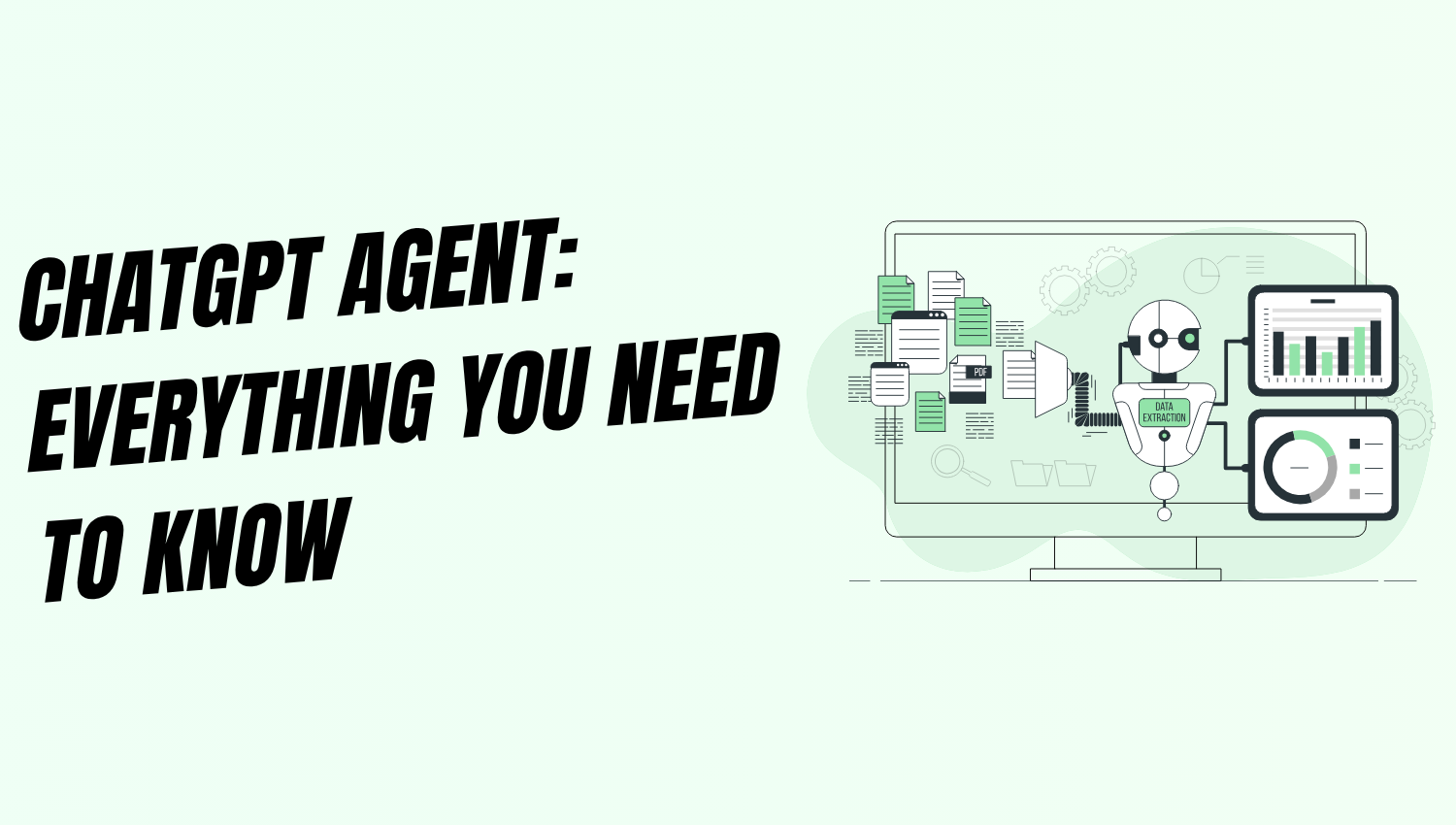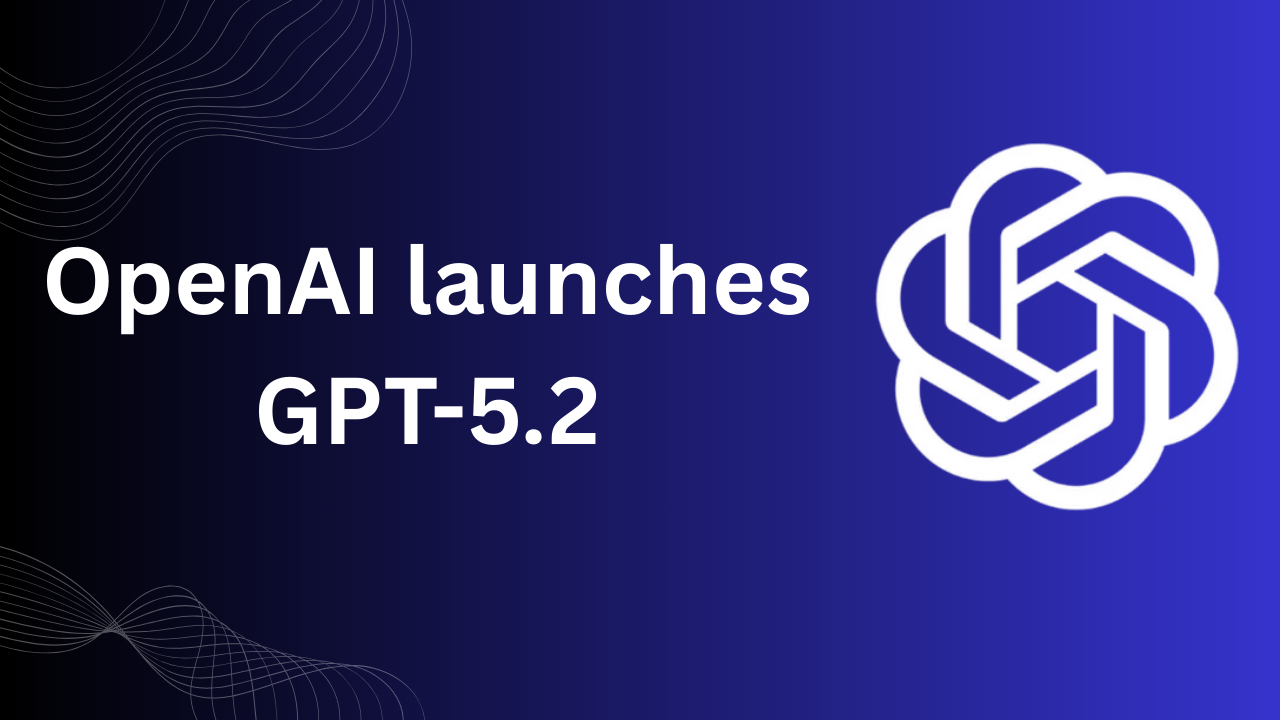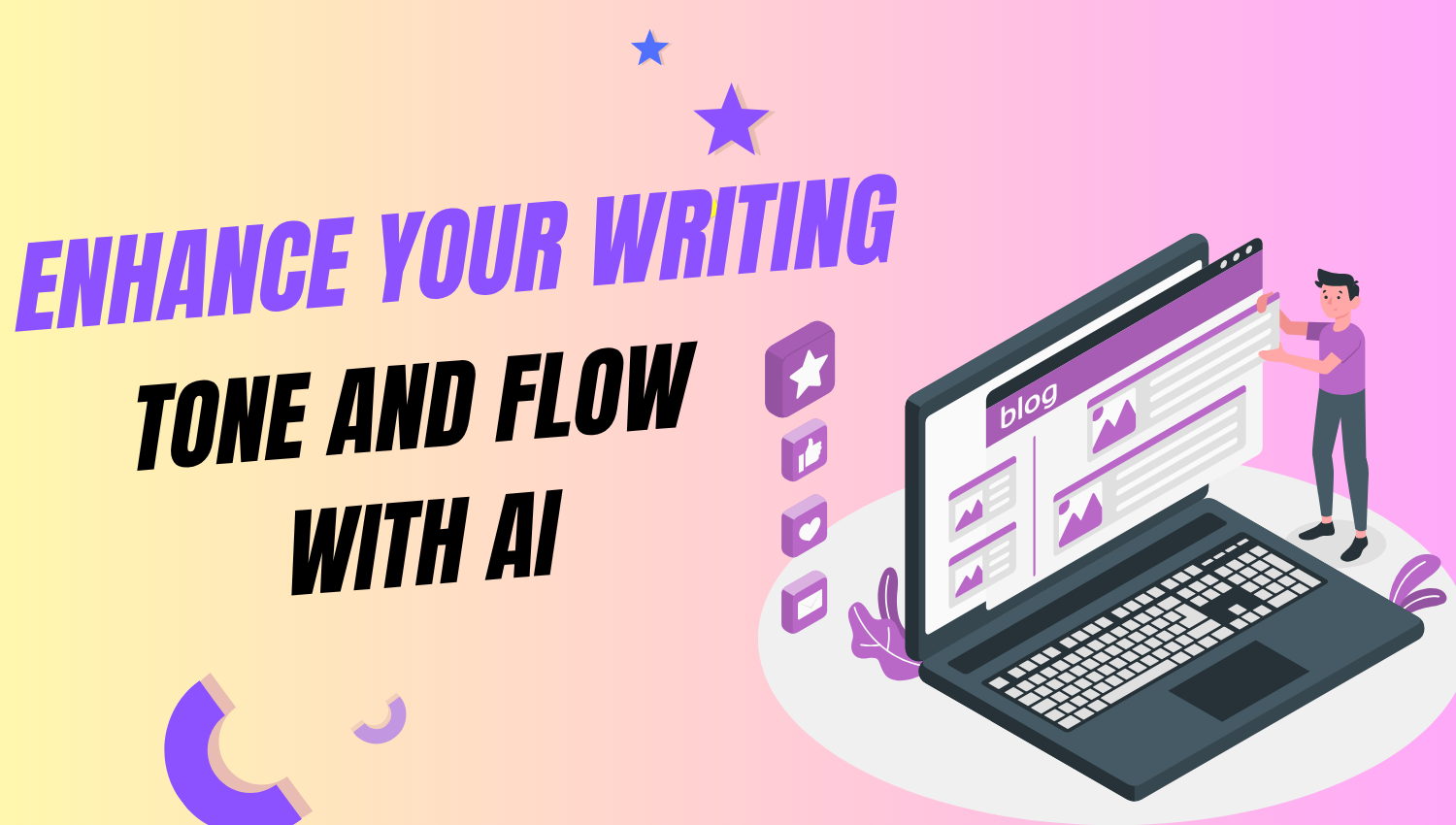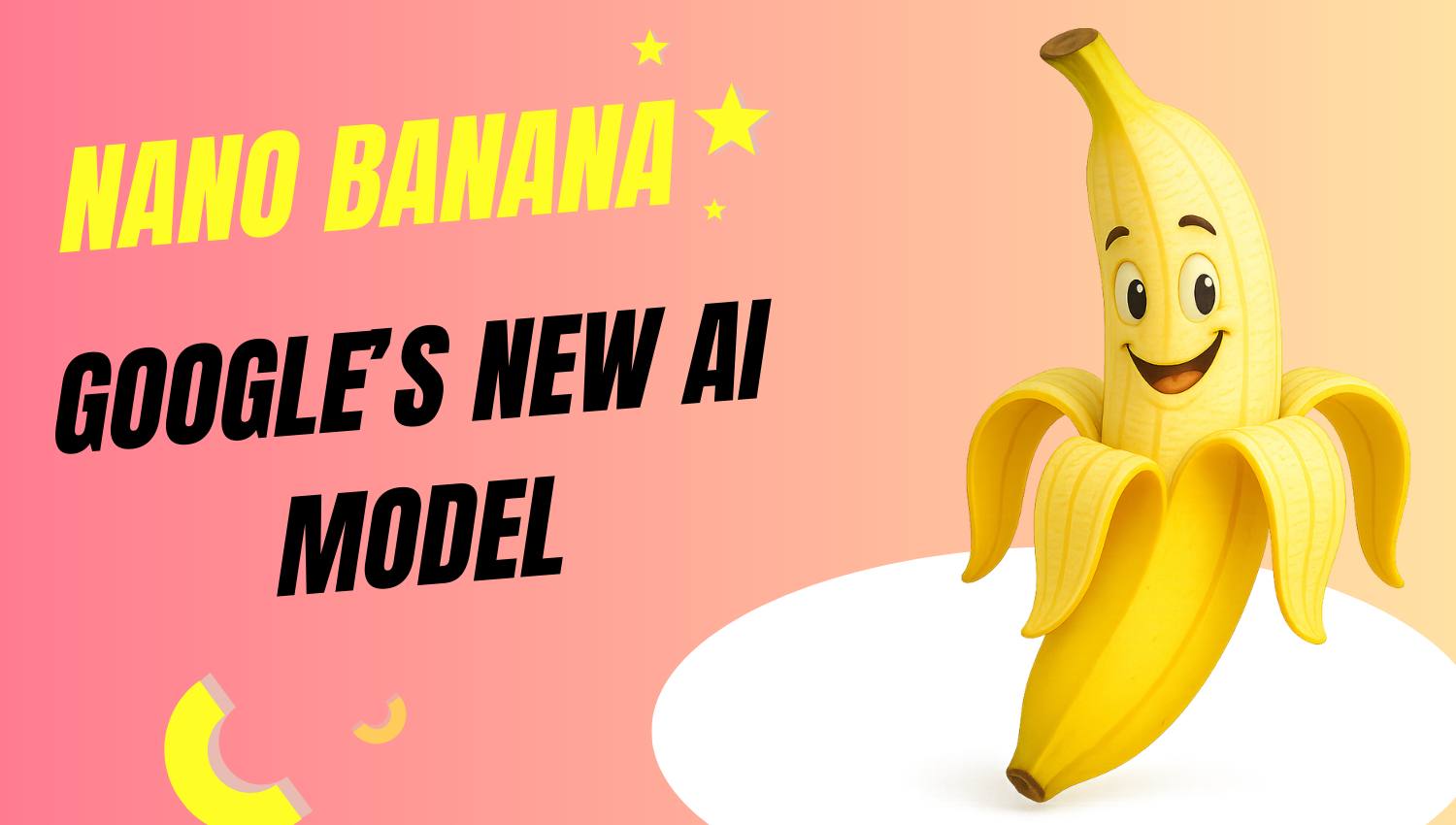Artificial‑intelligence chatbots have become everyday companions for writing drafts, summarizing articles and answering questions. But a new trend is taking conversational AI beyond passive assistance: agents that can complete complex, multi‑step tasks. In July 2025, OpenAI unveiled ChatGPT Agent, a general‑purpose AI agent that doesn’t just chat—it acts. It runs inside a secure virtual computer, navigates websites, calls APIs and writes code to carry out instructions autonomously. Early demos show it planning date nights, generating polished slide decks and even ordering cupcakes. This article explores what ChatGPT Agent is, how it works, real‑world uses in 2025, the advantages and drawbacks of this AI agent by OpenAI, and how it compares with traditional chatbots.
What is ChatGPT Agent?
OpenAI describes ChatGPT Agent as a general‑purpose AI agent by OpenAI that can complete computer‑based tasks on users’ behalf. It unifies two earlier tools—Operator (a web automation agent) and Deep Research (a research synthesis tool)—into one model. According to OpenAI and reporters who previewed the system:
- Agentic beyond chat: The Verge notes that ChatGPT Agent goes “beyond chatbots to complete complex, multi‑step tasks” using its own virtual computer. It can look at a user’s calendar, plan and purchase breakfast ingredients, create slide decks comparing competitors, or plan a date night by cross‑referencing calendar availability and restaurant reservations.
- Unified model and toolset: The new model is powered by a unified agentic system trained via reinforcement learning to decide which tool to use. It switches between a text browser, a GUI/visual browser and a terminal for code execution, with access to connectors like Gmail, Google Drive and GitHub. A research lead told Understanding AI that it’s the first model OpenAI trained that can access all three tools within one virtual machine.
- Availability: ChatGPT Agent launched on July 17 2025 for paid ChatGPT subscribers. It is rolling out to Pro, Plus and Team plans; Enterprise and Education accounts will receive it later in the year. Free‑tier users and certain jurisdictions (European Economic Area and Switzerland) currently do not have access.
- Prompt caps: FlexOS notes that Pro users receive about 400 agent prompts per month, while Plus and Team users get around 40 prompts per month.
- User confirmation: Before any irreversible action—such as sending an email or making a purchase—ChatGPT Agent pauses and requires user approval. This ensures that the human remains in control.
These features position ChatGPT Agent as a significant step toward AI that can both think and act. But how exactly does it work?
How do ChatGPT Agents work? (Technical overview)
Architecture: virtual computer with multiple tools
At the core of ChatGPT Agent is a virtual computer that integrates several tools:
- Text browser and visual browser: The agent incorporates both a text‑based web browser (for scanning long articles) and a visual or GUI browser (for interacting with forms, buttons and menus). The Verge notes that the agent can move between these browsing modes to accomplish tasks like booking restaurants or filling out forms.TechTarget explains that the visual browser allows clicking, scrolling and form‑filling, while the text browser handles large bodies of text.
- Terminal for code execution: Within its virtual environment, the agent has command‑line access. This allows it to run Python scripts, manipulate files, analyze data and generate outputs like spreadsheets and presentations. For example, a demonstration showed the agent writing code to calculate compounding investment growth and generating a PowerPoint deck with charts.
- API connectors and integrations: ChatGPT Agent can connect to services such as Gmail, Google Calendar, GitHub and SharePoint using OpenAI’s connector system. TechTarget notes that API access lets the agent query private data sources and perform actions like sending emails or reading calendar events.
- Image generation: The agent integrates OpenAI’s image generation technology to create visuals for presentations and documents.
Orchestration through reinforcement learning
The model behind ChatGPT Agent uses reinforcement learning to choose which tool to deploy at each step. In OpenAI’s launch video, researcher Zhiqing Sun explained that the team created “hard tasks that require using all these tools” so the model would learn not only how to use each tool but also when to use which tool. By training on complex workflows, the agent can seamlessly switch between browsing, coding and API calls to achieve a user’s goal. This unified approach distinguishes ChatGPT Agent from earlier agentic models that specialized in either research or web automation.
Safety, watch mode and memory restrictions
Agentic AI introduces new safety challenges. OpenAI’s ChatGPT Agent System Card outlines several mitigation measures:
- Prompt‑injection training: The agent undergoes specialized prompt‑injection robustness training. Evaluation results show that it successfully ignores irrelevant instructions or data exfiltration attempts in 99.5 % of synthetic text‑browser tests and 95 % of visual‑browser tests.
- Automated monitors and filters: Multiple automated filters run in real time to detect malicious content and prevent data exfiltration.
- User confirmations: The agent pauses and asks for confirmation before finalizing actions that affect the external world (purchases, emails, bookings). This reduces harm if the agent misinterprets instructions.
- Watch mode: When using the visual browser in sensitive contexts (e.g., logged into banking or email accounts), the agent enters “watch mode.” It will pause if the user navigates away or becomes inactive, requiring supervision for the rest of the task. FlexOS highlights that users can also take over the browser interface for sensitive inputs like passwords.
- Terminal network restrictions: The system card notes that terminal network requests are limited to downloading images or certain datasets.
- Memory disabled: To mitigate prompt‑injection risks, ChatGPT Agent launches with its memory feature disabled. This means it cannot recall prior interactions or user preferences across sessions, though OpenAI may revisit memory in the future.
These safeguards help ensure the agent’s actions remain aligned with user intent and reduce opportunities for misuse, but they also introduce friction and latency (see “Cons” section).
Uses of ChatGPT Agents in 2025
The release of ChatGPT Agent triggered a wave of experimentation. Below are notable use cases reported across news outlets and early adopters. They illustrate how businesses and individuals are using the agent in mid‑2025.
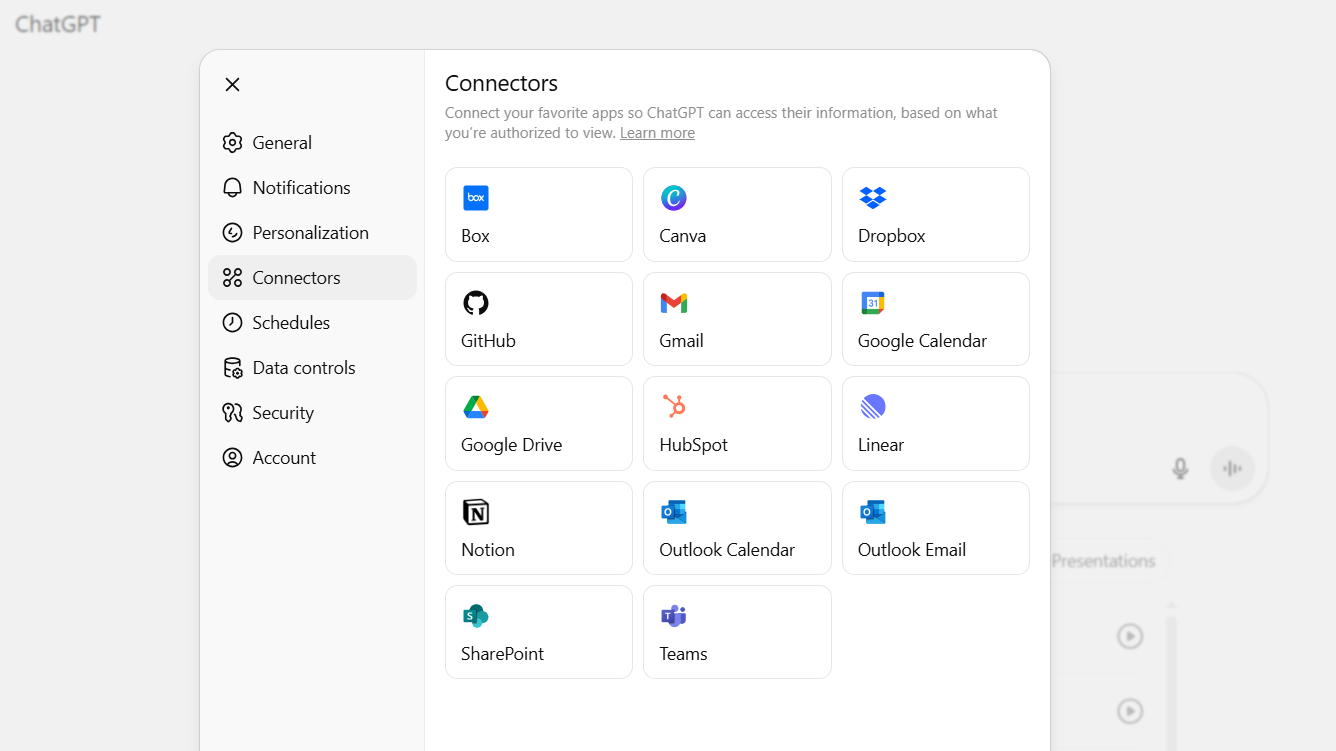
Personal productivity and everyday tasks
- Planning events and date nights: In The Verge’s demo, the agent was asked to plan a date night. It connected to the user’s Google Calendar to find an open evening and cross‑referenced OpenTable to book a restaurant. The agent could also plan a family breakfast by purchasing ingredients and scheduling the cooking.
- Grocery and product ordering: Understanding AI’s writer tested the agent on online grocery shopping. The new model accurately added 15 out of 16 items to the cart, located the nearest store and added items, though it struggled with login due to safety monitors. Wired describes research lead Isa Fulford using ChatGPT Agent to order cupcakes; the process took almost an hour but saved her the trouble of doing it herself.
- Email summarization and message triage: FlexOS lists email summarization as a top use case. By connecting to Gmail or Outlook, the agent can digest lengthy threads, highlight key points and draft responses. It can also review Microsoft Teams messages and produce a prioritized list of conversations.
- Meeting preparation and briefing: The agent can prepare briefing notes for upcoming meetings by pulling context from a user’s calendar, recent news and past documents. This replicates the role of a human assistant who compiles talking points.
- Calendar analysis: Users have asked the agent to analyze their calendar over six months and break down how their time was allocated across work, personal life and commuting. The agent categorized events and calculated percentages such as 26 % work and 44 % personal/relationships.
- Recipe planning and meal creation: OpenAI’s release notes suggest tasks like “plan and buy ingredients to make Japanese breakfast for four,” showing how the agent can handle recipe research, shopping and scheduling.
- Blog post creation and publishing: FlexOS reports that the agent logged into a WordPress site, drafted a blog post, inserted images from Unsplash, formatted headings and published the post—all from a single prompt.
Business automation and knowledge work
- Slide deck creation and competitor analysis: One of the most publicized demos involved asking the agent to analyze three competitors and create a PowerPoint deck. It browsed competitor websites, synthesized findings and generated an editable presentation. TechCrunch explains that the agent can automatically generate slideshows and code, combining Operator’s browsing skills and Deep Research’s synthesis capabilities.
- Financial modeling: In a use case shared by FlexOS, the agent built a discounted cash‑flow (DCF) model for an energy company. It fetched financial inputs, reasoned through assumptions, calculated valuations in Excel and produced a detailed model within 17 minutes.
- Data analysis and visualization: The agent can analyze spreadsheets, compute KPIs and generate charts. In one demo, it parsed Nvidia’s Q1 earnings data and produced a slide deck with charts and insights.
- Internal document analysis: OpenAI’s internal tests showed the agent accessing Google Drive files, extracting evaluation results, generating visualizations and producing a summary presentation. The ability to combine API data retrieval and code execution allows for complex document processing.
- Market research and product research: The agent can browse websites and capture pricing information or product options. The Verge reported a demo in which it shopped on Etsy for a vintage lamp and flowers, compiling prices and screenshots. Another demonstration compared Labubus with Beanie Babies and produced a research report.
- Human resources tasks: The agent can assist with recruiting by scanning LinkedIn profiles, filtering for relevant experience and compiling spreadsheets of candidates. It can also plan company offsites by researching travel, accommodation and dietary preferences.
- Course creation and knowledge dissemination: In one example, the agent designed a self‑paced course titled “Getting Good at Agent Management,” generating modules, activities and project ideas.
Technical and analytical tasks
- Code execution and debugging: The agent’s terminal access allows it to write scripts, run programs and debug code. FlexOS lists “coding and debugging support” as a potential use case.
- Data extraction and scraping: It can scrape data from websites, extract structured tables and export them to Excel or CSV.
- Cross‑platform workflow automation: By stringing actions across tools (e.g., logging a form entry in a CRM, notifying a Slack channel and creating an Asana task), the agent can orchestrate workflows across multiple platforms.
- Crypto trading: Cointelegraph highlights a growing trend of using ChatGPT Agents for crypto trading. The agent automates research, charting and sentiment analysis, integrates real‑time on‑chain data and can even place trades with user‑approved API keys. Traders use it to monitor price charts, compute moving averages, track whale activity and generate reports. While powerful, the article emphasizes that strategic judgment and human oversight remain essential.
Potential future uses
FlexOS speculates on dozens of additional use cases, from paperwork completion and form filling to legal research, marketing campaign management, file organization and cross‑departmental coordination. While these applications may not be fully realized today, they demonstrate the broad potential of agentic AI when combined with connectors and code execution.
Pros of ChatGPT Agent
- Handles complex workflows: Unlike traditional chatbots that only generate text, ChatGPT Agent can execute entire workflows—from research and data analysis to file creation and form submission. It automates tasks that would otherwise require switching among tools, boosting productivity.
- Multi‑tool integration: The agent combines browsing, code execution, API access and image generation within a single virtual environment. This eliminates context switching and allows tasks like research, analysis and presentation generation to flow seamlessly.
- Strategic planning and decision support: By synthesizing information from dozens of websites, analyzing data and generating slide decks with actionable insights, the agent can support strategic planning and competitor analysis. FlexOS’s financial modeling example shows how it can deliver sophisticated output rapidly.
- Enhanced productivity for knowledge workers: Use cases such as email summarization, meeting preparation, slide deck creation and calendar analysis reduce administrative burdens and free up time for higher‑level work.
- Natural language interaction: Users can describe a multi‑step task in plain language, and the agent figures out the steps, consults the right tools and executes them. This lowers the barrier to using automation tools.
- Safety and user control: Built‑in safeguards—user confirmation, watch mode, terminal restrictions and memory disabling—help prevent harmful actions and protect personal data. The agent asks permission before purchases and allows the user to take over in sensitive contexts.
- Higher model performance: OpenAI reports that the underlying model achieves 41.6 % on Humanity’s Last Exam (HLE), nearly doubling previous models’ scores. It also attains strong performance on complex math benchmarks when using tools, indicating improved reasoning.
Cons and limitations
- Latency and slowness: The agent may take minutes (or even an hour) to complete a task. Wired reports that ordering cupcakes took nearly an hour, and OpenAI’s product lead admits that an average task can take 10 to 15 minutes. This makes it a “background tool” rather than real‑time assistant.
- Reliability issues: Early testers note that the agent still makes mistakes. Understanding AI observed that the agent missed items in a grocery order and struggled with login due to an overactive safety monitor. The author concluded that the agent isn’t yet reliable enough for important tasks.
- Safety monitors can impede tasks: The agent’s proxy server may block legitimate pages if it deems a URL irrelevant or risky. In the grocery example, it blocked the Kroger login page despite the user requesting it. This friction requires users to intervene, reducing automation benefits.
- No memory and personalization: Because the memory feature is disabled at launch, the agent cannot learn user preferences across sessions. Wired points out that memory would help the agent know someone’s preferred cuisine or usual slide‑deck formatting. Without it, users must repeatedly specify preferences.
- Access limitations and prompt caps: Only paying subscribers in specific regions can use ChatGPT Agent, and there are monthly prompt caps (400 for Pro users and 40 for Plus/Team users). Free users must wait for broader rollout.
- Restricted financial transactions: OpenAI has limited the agent’s ability to perform financial transactions. TechCrunch notes that actions like trading require extra safety checks and may be disabled. Cointelegraph emphasizes that trade execution requires explicit user approval.
- Potential for misuse and harm: Despite safeguards, agentic AI could be misused for prompt injection attacks or retrieving sensitive data. OpenAI classifies the model as “high capability” in biological and chemical domains and activates related safeguards. Safety remains a work in progress.
- Slow adoption for everyday tasks: Understanding AI argues that even if ChatGPT Agent becomes flawless, many tasks like grocery shopping might still be easier to perform manually, because the agent cannot infer personal preferences.
ChatGPT Agent vs. traditional chatbots
Traditional chatbots are primarily conversational. They generate text responses based on user prompts but cannot take actions beyond the chat interface. While some chatbots can call functions via APIs, they usually lack the ability to operate a browser, manipulate files or execute code. Their main strengths are answering questions, generating content and automating simple interactions like scheduling a meeting.
ChatGPT Agent differs in several ways:
| Aspect | Traditional chatbots | ChatGPT Agent |
|---|---|---|
| Core capability | Answers questions and generates text. | Executes multi‑step workflows, including browsing, code execution, API calls and file generation. |
| Tools available | Typically limited to language functions and occasionally a function‑calling API. | Has a virtual computer with a text browser, visual browser, terminal, API connectors and image generation. |
| Learning method | Trained to generate coherent responses but not to choose among multiple tools. | Uses reinforcement learning to decide when to browse, code or call APIs. |
| Safety | Must comply with content policies but usually does not act on data outside the chat. | Requires user confirmations, uses watch mode and limits network access to prevent harm. |
| Latency | Usually responds quickly. | Can take minutes to complete tasks. |
| Personalization | Can remember context within a session or across sessions using memory features. | Memory disabled at launch, so personalization across tasks is limited. |
In summary, ChatGPT Agent is closer to a digital assistant that uses a suite of tools to act in the real (digital) world, while traditional chatbots remain largely conversational.
Frequently asked questions
What is ChatGPT Agent?
ChatGPT Agent is OpenAI’s general‑purpose AI agent that can autonomously complete computer tasks using a virtual browser, code execution tools and API connectors. It combines the capabilities of OpenAI’s Operator and Deep Research tools into one model.
How do I enable ChatGPT Agent mode?
You can enable agent mode by selecting “Agent” from the Tools dropdown in ChatGPT’s interface or by typing /agent in the chat. On mobile, an agent icon provides access.
Do I need a paid plan?
Yes. As of July 2025, ChatGPT Agent is available only to Pro, Plus and Team subscribers. Enterprise and Education users will gain access later, and free plans do not yet include the feature.
Can ChatGPT Agent perform financial transactions?
The agent’s ability to perform transactions is restricted. OpenAI’s product lead told The Verge that financial actions are off‑limits for now, and there’s a special “watch mode” if users navigate to sensitive websites. In the context of crypto trading, Cointelegraph notes that the agent can execute trades only if the user provides API credentials and explicitly approves each transaction.
Is the agent safe to use?
OpenAI employs multiple safeguards. The agent undergoes prompt‑injection training, uses automated monitors and filters, requires user confirmation for consequential actions, enters watch mode in sensitive contexts and disables memory. However, early testers found that these safety systems sometimes block legitimate actions or slow down tasks.
What are the main use cases in 2025?
Popular applications include planning events, shopping, summarizing email threads, preparing meeting briefs, creating presentations, financial modeling, data analysis, recruitment and crypto trading. Many more use cases are emerging as businesses experiment with the technology.
How does ChatGPT Agent compare to traditional chatbots?
Unlike traditional chatbots that just generate text, ChatGPT Agent can act. It browses, clicks, fills forms, executes code and integrates with external services. Traditional chatbots provide answers and content but cannot perform complex multi‑tool workflows.
Does ChatGPT Agent remember previous interactions?
Not currently. OpenAI disabled the agent’s memory for safety reasons, so it cannot recall past sessions or user preferences. This limitation may be revisited in future updates.
Are there regional restrictions?
Yes. OpenAI’s initial rollout excludes free users and some regions, including the European Economic Area and Switzerland. Regulatory approvals may determine future availability.
Conclusion: the dawn of agentic AI
ChatGPT Agent represents a watershed moment in the evolution of conversational AI. Where chatbots once answered questions and generated text, OpenAI’s AI agent now executes multi‑step tasks: booking reservations, compiling research, analyzing data, generating presentations and even assisting with crypto trades. The agent merges browsing, code execution, API integration and image generation into a single toolset, orchestrated by a reinforcement‑learned model that can reason about which tools to use.
Yet the technology is nascent. Latency and reliability issues hinder the agent’s usefulness for everyday chores, and safety systems sometimes block legitimate actions. Memory is disabled, limiting personalization, and access is restricted to paid plans. Nonetheless, early use cases—from financial modeling to blog publishing—show how ChatGPT Agent can transform workstreams and free humans from repetitive tasks.
OpenAI’s agent arrives amid an industry‑wide shift toward autonomous AI. Whether ChatGPT Agent becomes an indispensable assistant or remains a niche tool will depend on improvements in speed, reliability and safety. For now, the best approach is experimentation with caution. Try delegating complex digital chores to the agent, monitor its actions and provide clear instructions. As agentic AI matures, it may soon become as commonplace as chatbots—changing the way we work and interact with information.
